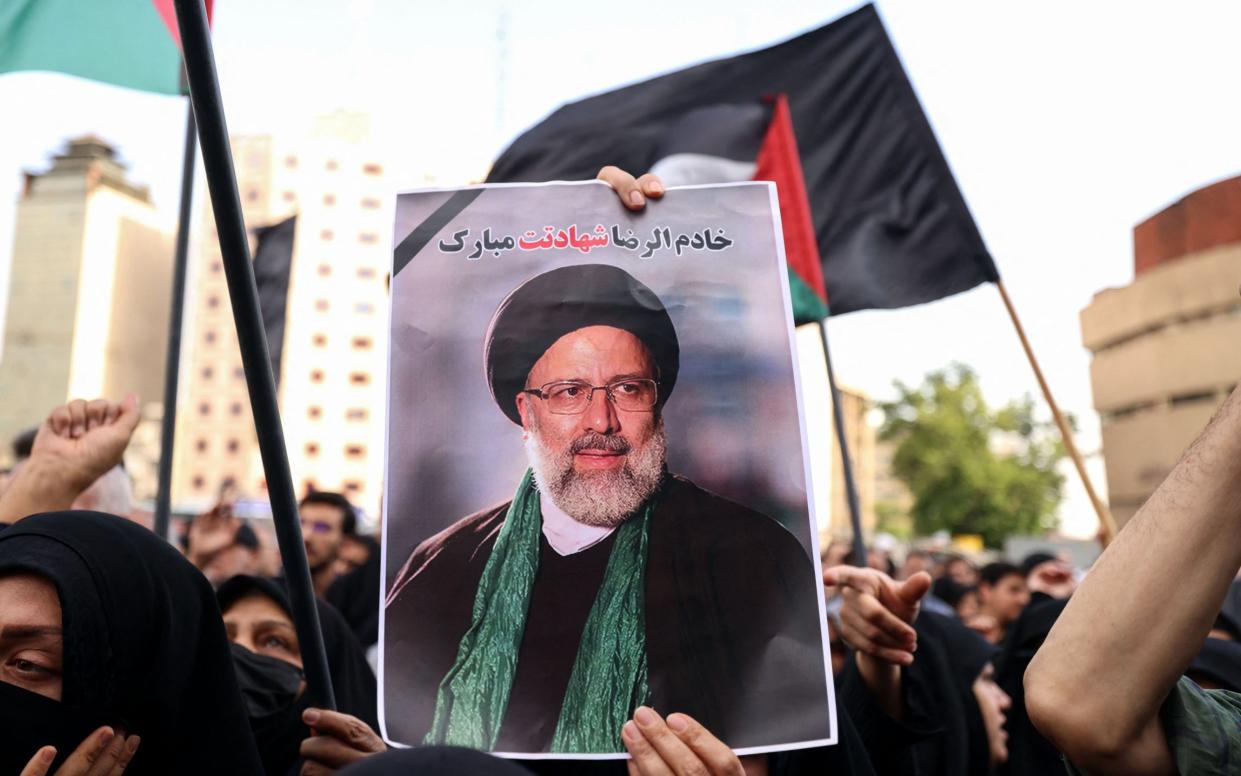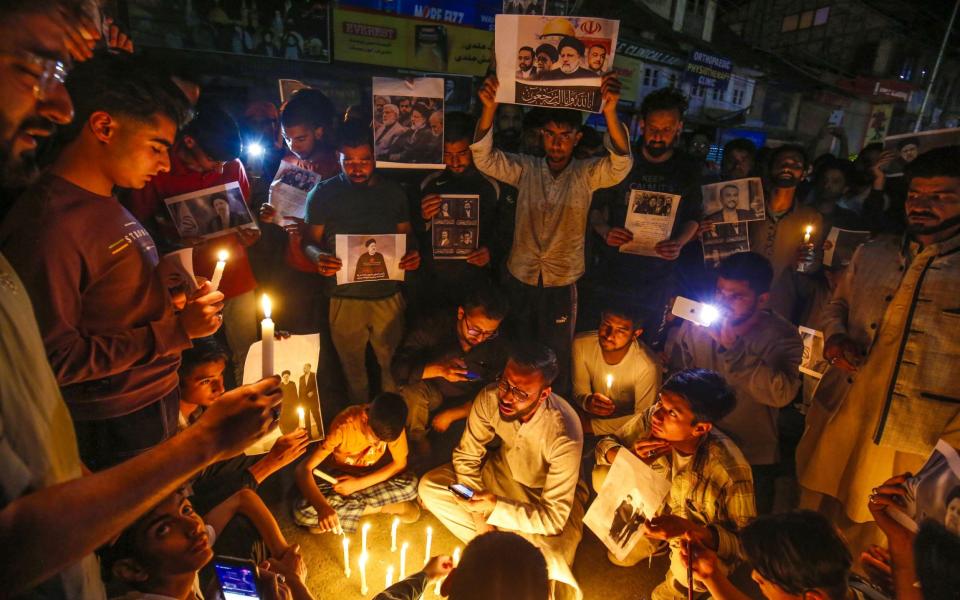Iran blames Western sanctions for fatal crash of US helicopter carrying Ebrahim Raisi

- Oops!Something went wrong.Please try again later.
- Oops!Something went wrong.Please try again later.
- Oops!Something went wrong.Please try again later.
Mohammad Javad Zarif, Iran’s former foreign minister, has blamed US sanctions on aviation parts for the helicopter crash that killed the Islamic Republic’s president.
Mr Zarif suggested on Monday that the punitive measures had compromised Tehran’s access to modern aircraft and inhibited repairs to its ageing fleet of American-made aircraft.
The helicopter carrying Ebrahim Raisi, the late Iranian president, as well as Hossein Amirabdollahian, the foreign minister, on the fatal flight was a US-made Bell 212 helicopter, likely to be more than 40 years old, according to Iranian state media.
“One of the culprits behind yesterday’s tragedy is the United States, because of its sanctions that bar Iran from procuring essential aviation parts,” Mr Zarif said in an interview with state television.
“These will be recorded in the list of US crimes against the Iranian people.”
Iran heavily invested in US aircraft, including F-14 fighter jets and the Chinook helicopters, before the 1979 Islamic Revolution.
Washington announced an arms embargo against Tehran shortly afterwards, and its rebranded Islamic Republic of Iran Air Force began to fall into disrepair.
The regime was able to keep its fleet in the skies by cannibalising aircraft for spare parts and reverse engineering others that were blocked from shipment by the US.
Two Bell 212 helicopters, used to transport high-ranking government officials, were known to have survived the blockade in working order.
However, recently the US, UK and EU have ratcheted up sanctions on dual-use goods that could help repair or upgrade the aircraft in response to Iran’s support for Russia’s war in Ukraine.
The two-bladed, twin-engineered aircraft Bell 212 earned legendary status among American veterans of the war in Vietnam for its role in the conflict.
They have written memoirs detailing how the helicopter could rack up more than 1,000 hours flying over the country’s dense jungles in a single six-month tour.
Some of the craft were said to have survived having their engines and hydraulic systems shot out by Viet Cong Guerrillas while still successfully completing missions or moving heavy loads between bases.
Robert Mason, one of those American pilots, wrote a memoir, Chickenhawk, which inspired a generation of aviators.
While the Bell 212 has many nicknames, those who have piloted it describe it as a “Massey Ferguson of the skies”, after the American tractor famed for its workhorse reliability.
These relics of the Vietnam era are not only still in use with the Iranian air force.
The US Air Force, Italy, Spain, Argentina and Saudi Arabia, among others, still count the ageing helicopter as part of their fleets.

Details of the crash that killed Raisi are still scant, with experts refusing to offer a definitive opinion on what exactly happened to bring the craft down.
Western sanctions could have been behind the poor upkeep of the aircraft, with its American-made parts almost impossible to acquire through legal avenues.
But in reality, the Bell 212’s age has meant spares have become increasingly difficult to secure even if you are one of Washington’s closest allies.
The British military only recently stopped flying its own fleet of Vietnam-era helicopters, which it branded obsolete because of the time it took to find spare parts.
Where it would once take weeks to source the required materials, more recently engineers were sometimes forced to wait for months for spares to arrive.
Given its experience of flying over the jungles of Vietnam, the Bell 212 would have been considered more than capable of transporting the Iranian president across his country in peacetime.
And like any other modern helicopter, it has a series of fail-safes that keep it from falling out of the sky in the event of most catastrophic mechanical failures.
Because of the Bell 212’s analogue cockpit, the variation flying President Raisi may have lacked modern digital instruments to make navigation through poor weather conditions viable.
Experts have suggested heavy fog and a brewing storm on Sunday had likely impeded the pilot and contributed to the accident.
It could have been that the variant flying the Iranian president did not feature either a weather radar or a radar capable of penetrating the clouds to establish altitude, making it difficult to fly in poor conditions when entirely reliant on the pilot’s visuals to navigate the terrain.
The conditions were so bad that an EU satellite and Turkish drones had to be brought in to even find the remains of the helicopter.
And given the location and Turkish claims that the aircraft was not fitted with transmitting equipment, it may have been difficult for the pilots to seek help from air traffic controllers.


